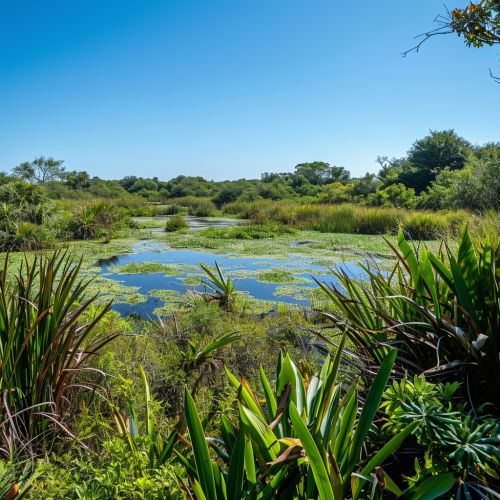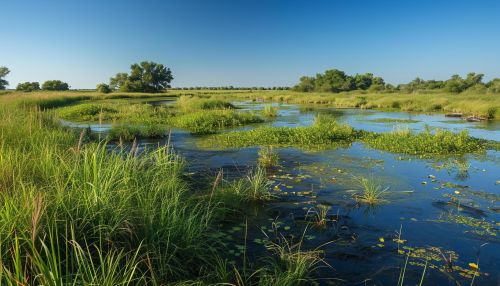Wetland Management
Introduction
Wetland management refers to the process of preserving and enhancing the functionality of wetlands. Wetlands are unique ecosystems that provide a habitat for a diverse range of flora and fauna, and play a crucial role in water purification, flood control, and carbon sequestration. However, they are under threat from various anthropogenic activities, including pollution, land development, and climate change. Therefore, effective wetland management strategies are essential to conserve these valuable ecosystems and the services they provide.


Importance of Wetlands
Wetlands are among the most productive ecosystems on Earth, comparable to rain forests and coral reefs. They provide a range of ecosystem services that are invaluable to humans and the environment. These include water filtration, storm protection, flood control, and providing habitat for wildlife. Wetlands also play a significant role in climate change mitigation by acting as carbon sinks, absorbing and storing carbon dioxide from the atmosphere.
Threats to Wetlands
Despite their importance, wetlands are facing numerous threats. These include land development, pollution, invasive species, and climate change. Land development for agriculture, urbanization, and industrialization has led to significant wetland loss. Pollution from agricultural runoff, industrial waste, and sewage can degrade water quality and harm wetland ecosystems. Invasive species can outcompete native species and alter wetland ecosystems. Climate change poses a significant threat to wetlands, as rising sea levels can inundate coastal wetlands, and changes in precipitation patterns can affect freshwater wetlands.
Wetland Management Strategies
Effective wetland management requires a comprehensive approach that addresses the various threats to wetlands. This includes land use planning to avoid wetland loss, pollution control to maintain water quality, invasive species management to protect native species, and climate change adaptation strategies to help wetlands cope with changing conditions.
Land Use Planning
Land use planning is a critical component of wetland management. This involves identifying and protecting wetland areas from development, and integrating wetlands into urban and rural planning. Tools such as Geographic Information Systems (GIS) can be used to map wetlands and inform land use decisions.
Pollution Control
Pollution control measures are essential to maintain the water quality of wetlands. This can involve regulating agricultural practices to reduce runoff, implementing industrial waste management practices, and improving sewage treatment to prevent contamination of wetlands.
Invasive Species Management
Invasive species management involves preventing the introduction of invasive species, controlling their spread, and restoring native species. This can be achieved through public education, early detection and rapid response programs, and restoration efforts.
Climate Change Adaptation
Climate change adaptation strategies for wetlands may include protecting and restoring coastal wetlands to provide a buffer against sea level rise, and managing water levels in freshwater wetlands to cope with changes in precipitation.
Wetland Restoration
In addition to conservation, wetland restoration is a key aspect of wetland management. Wetland restoration involves the reestablishment of the structure and function of degraded wetlands through measures such as rehydration, re-vegetation, and reintroduction of native species.
Conclusion
Wetland management is a complex and challenging task that requires a comprehensive and integrated approach. However, with effective strategies and concerted efforts, it is possible to conserve and enhance these vital ecosystems for the benefit of both people and the environment.
